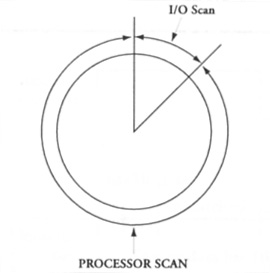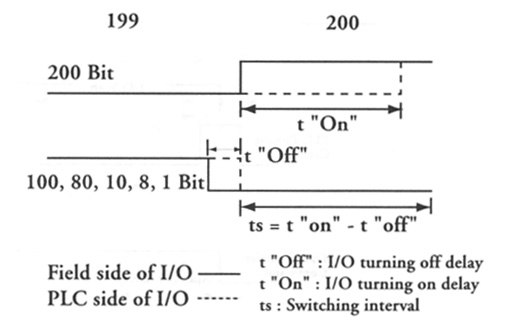Interfacing Absolute Position Decoders to PLCs and Microcomputers
 Microcomputers and PLCs are sequential logic devices. In contrast to a real-time hardware logic, which can perform many operations at the same time, a PLC can perform only a single operation before proceeding to the next logical step. The figure describes the logical operation of a PLC, which is cyclical in nature. During the I/O scan, the PLC looks at the input terminals and activates the outputs based on the ladder logic. During the processor scan, the new input data is processed by the Central Processing Unit (CPU) according to the ladder program and the outputs are updated during the next I/O scan. This cycle repeats again and again.
Microcomputers and PLCs are sequential logic devices. In contrast to a real-time hardware logic, which can perform many operations at the same time, a PLC can perform only a single operation before proceeding to the next logical step. The figure describes the logical operation of a PLC, which is cyclical in nature. During the I/O scan, the PLC looks at the input terminals and activates the outputs based on the ladder logic. During the processor scan, the new input data is processed by the Central Processing Unit (CPU) according to the ladder program and the outputs are updated during the next I/O scan. This cycle repeats again and again.
The expression “garbage in, garbage out” fits very well with the PLC. If the input data is invalid or incorrect, the corresponding machine operation will also be incorrect. Therefore, it is very important that when the PLC reads the decoder input during the I/O scan, the decoder data is valid and free of any ambiguities.
There are two main inherent characteristics of electronic devices that could cause wrong decoder data into the PLC:

